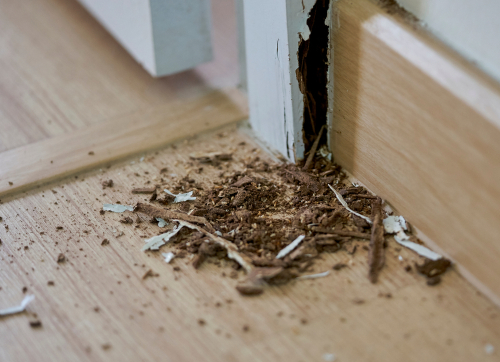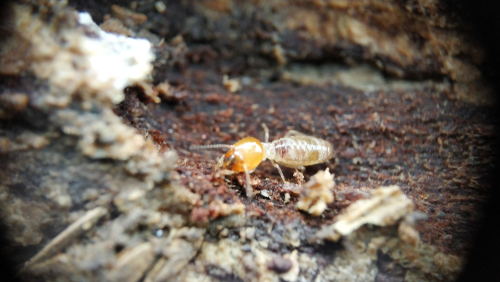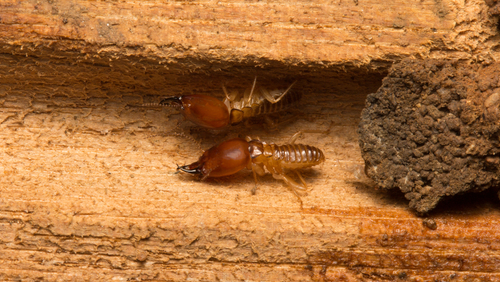
What Are The Different Types Of Termites?
June 22, 2021
Can Termites In Your House Make You Sick?
August 10, 2021What do Professionals Use to Kill Termites?

What do Professionals Use to Kill Termites? Termites are the most expensive and damaging of all the pests that homeowners have to deal with. The insects eat on cellulose, a natural fiber element found in wood and plants.
So they’ll essentially eat your house if you don’t get rid of them quickly. Calling a professional pest control or exterminator company is the quickest approach to get rid of termites.
These businesses have accessibility to the highest products that destroy termites faster than do-it-yourself alternatives. Read on – What do Professionals Use to Kill Termites?
How to Identify a Termite Infestation

- Hollow wood
- Headbanging
- Mud tubes
- Peeling paint
- Swarm evidence
- Seeing live termites
- Frass
What do Professionals Use to Kill Termites? –
How does a professional do it?

They will build a custom-tailored strategy based on analysis to both eliminate existing termites as well as prevent future invasions after a complete investigation of your home, paying particular attention to entry points.
The first method
A skilled specialist digs a hole in the soil and drill into the home’s slab regions to apply the liquid therapy to form a protective barrier post implementing the plan using liquid termiticides as well as its unique OnGuard Protection.
Termite bait stations will be discreetly placed about the perimeter of the home by your specialist.
They will do a yearly examination to ensure there are no indicators of termite activity to monitor. If there are any, they will re-treat your home at no cost to you.
Second method
Professionals might employ three different types of procedures to carry out the plan.
The Termidor liquid treatment eliminates present termites and avoids infestations; the dry foam could expand to cover crucial, hard-to-reach places; as well as the Sentricon bait and monitor, that targets at-risk locations such as roofs, moist soil, tree stumps, and other structures.
They might design a Constant Termite Examination Plan and Re-treatment Program as a monitoring tool to make sure that if termites reappear, the business will return to fight them at no additional expense.
The third method
Fipronil, as well as hexaflumuron, are indeed the two major insecticides that are used to kill termites. This Fipronil is a chemical that is utilized as an active ingredient in a variety of liquid termiticides. This could kill termites on touch in high enough doses.
It is used by pest control professionals all around the periphery of homes. Hexaflumuron is a termiticide intended primarily for use in termite bait, such as the popular Sentricon baiting method.
Termites locate the bait station, consume the poison, then leave a trail directing other termites to the food source. The termites then transport the chemical back to the hive/colony, where it infects and kills all of the bugs.
What do Professionals Use to Kill Termites? –
Some other methods are:

Getting Rid of Subterranean Termites
- Termiticide Barriers: These barriers vary by state, but you might be able to obtain professional-level extermination of termite materials. To build a barrier, you spray these traditional termite treatments to the home’s external perimeter.
Because termites can’t identify the termiticide, they wouldn’t try to prevent it. A termite should die if it consumes termiticide-treated materials. Termiticide likewise operates in the same way as a virus does.
Once a termite came in contact with this termiticide, it unwittingly spreads it across the colony, affecting other termites and eventually destroying it.
- Direct Chemicals: In contrast to termiticides, these compounds can be utilized within your home. This is the method to use if you see a termite and want to get rid of it right away.
Termiticide Foam should be directly added into voids, fissures, and crevices where termites use to hide.
The odorless foam will expand before dissipating, producing a residue that poisons termites immediately as they come into contact with it. This procedure can be used for a month or even longer.
- Termite Baits: Termite baits have been demonstrated to be effective. Foraging termites are drawn to the poison inside these baits, which are placed around the perimeter of the home’s base.
The slow-acting toxin stops termites from growing normally, killing them when they attempt to molt.
Because the toxin takes a long time to take effect, infected termites will transport the insecticide back to the nesting colony and spread it to the remaining termites.
- Beneficial Nematodes: Many garden pests, like termites, are native parasites of these minuscule, segmented roundworms. Infested sections of the lawn and garden should be treated with a combination of potting soil, nematodes, with cold water.
Drywood Termite Extermination

You could drill and plug holes to battle dry wood termites if you’re working with painted or polished wood. To begin, drill holes about 10 inches or so into the termite-infested wood. Once they get to the colony, they will encounter resistance.
Then use termiticide to plug the holes. To finish, fill the holes with putty or a wood patch. Essential oils such as orange and neem oil could kill termites with time by preventing them from shedding their skin or laying eggs.
Simply combine two cups of water, a few drops of dish soap, and roughly ten drops of your preferred oil in a spray bottle. Spray it on contaminated wood as well as materials after shaking it up.
Subterranean termite extermination

- Boric acid- It is a tried-and-true method of termite extermination. The very efficient boric acid is used as the principal ingredient in many termite pesticides available in stores. Boric acid dehydrates the termite and causes its nervous system to shut down.
Simply apply the acid evenly to cracks and fissures in walls, floors, and ceilings.
- Diatomaceous earth: This approach kills termites by piercing and drying their exoskeleton. Diatomaceous earth is composed up of silica-based exoskeletons from ancient aquatic creatures.
Simply sprinkle the powder over locations where termites are suspected and watch them crawl over it.
- Cardboard-Wet 2 pieces of cardboard then stack them on top of one another to construct a form of DIY bait when you’ve located the origin of your termite infestation.
Termites would be attracted to the cellulose in the cardboard, and they’ll become trapped between the two parts.
The cardboard can then be taken outside and burned. This isn’t a particularly effective procedure because there’s no guarantee that it’ll catch all of the termites, that reproduce swiftly.
What do Professionals Use to Kill Termites? –
Conclusion

Direct chemicals can also be employed on the inside, termite baiting can be arranged, and boric acid can be sprayed on your floors as well as walls. Professional kill termites and monitor their long-term.




